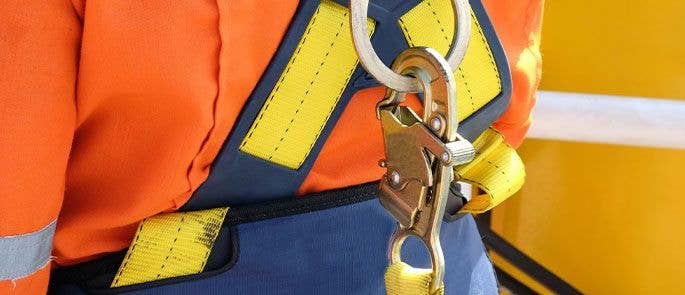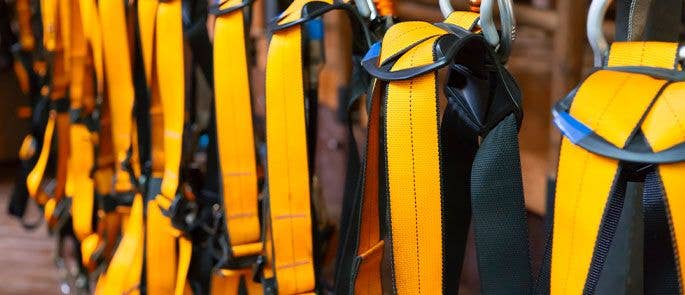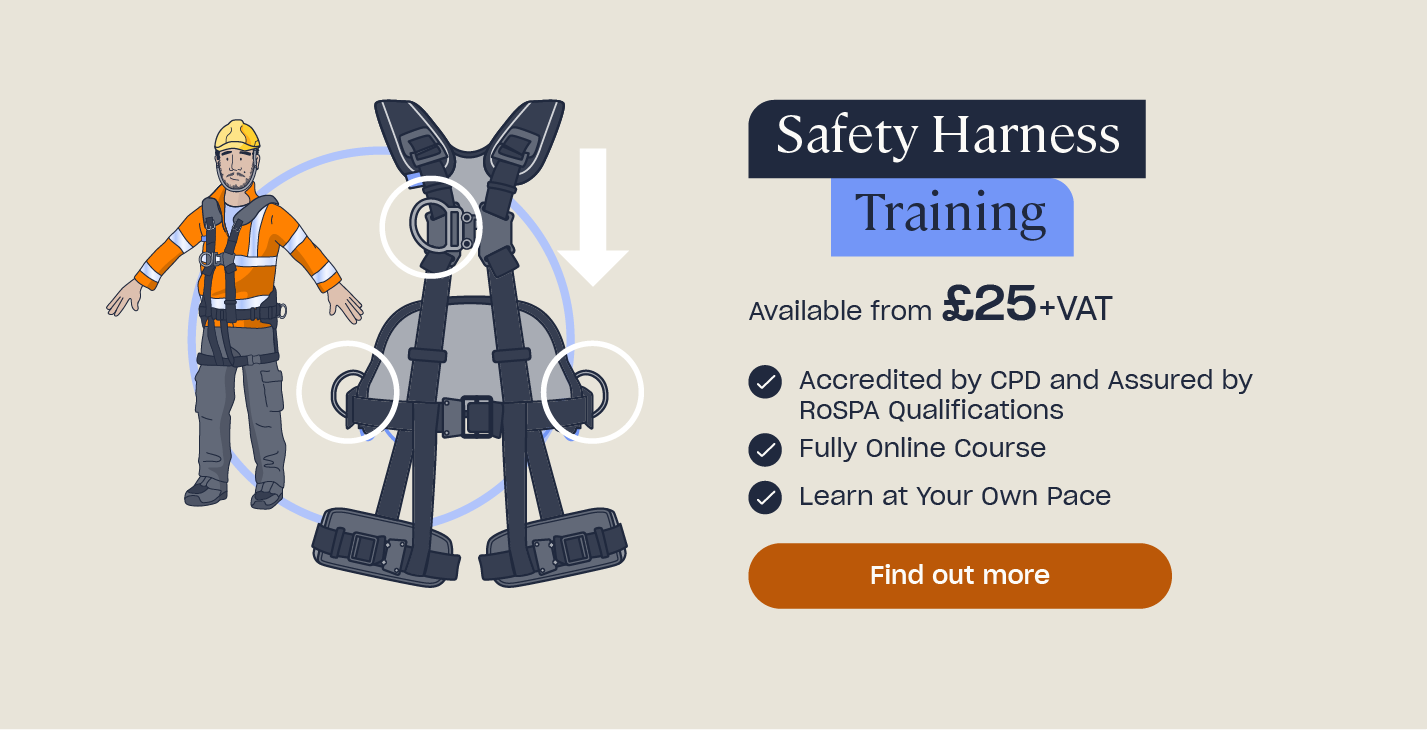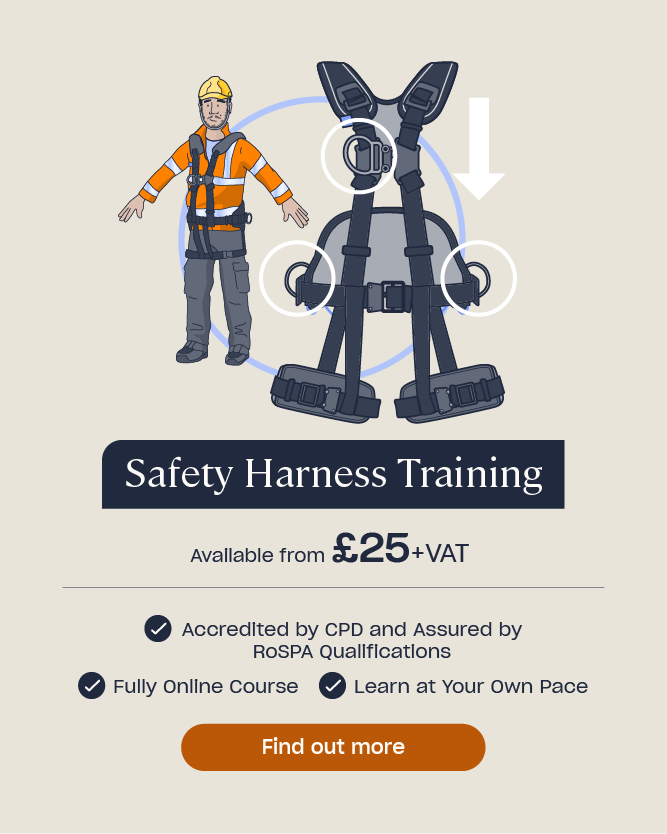What is a Safety Harness?
If you’re required to work at height as part of your job role, then suitable protective equipment, such as safety harnesses, is vital to prevent falls, injuries and even fatalities in the workplace. In this article, we’ll outline what a safety harness is, what a safety harness is used for, the different types of harnesses you might be required to wear and the key legal regulations to be aware of.
What is a Safety Harness Used for?
A safety harness is a type of personal protective equipment designed to stop people from falling when working at height. It works by securing the wearer to a stable anchor point, helping to prevent serious injury or death in the event of a fall.
A safety harness is part of a bigger fall protection system that, when worn correctly and safely attached to a solid structure, limits the distance and impact of a fall should one occur.
Falls from height are one of the most frequent causes of workplace injuries and one of the most common construction hazards. Using a safety harness correctly can make high-risk tasks much safer and plays a crucial role in protecting workers from harm.
A safety harness should be used by anyone working at height, but common professions include scaffolders, roofers, construction workers, engineers, electricians and carpenters.
Safety Harness Training
Our online Safety Harness training explains more about how to use a harness safely to protect yourself, and others, from danger when carrying out work activities at height.
Types of Safety Harnesses
There are various different types of safety harnesses available, each suited to different work activities. Some of these include:
Fall Arrest Harnesses
These are the most widely used type of harness and are designed to stop a fall as it’s happening. They usually have a dorsal attachment point on the back and sometimes a sternal point on the chest. When combined with a shock-absorbing lanyard or a retractable lifeline, the harness spreads the force of the fall across the body, reducing the chance of serious injury.
Work-Positioning Harnesses
Work-positioning harnesses are used to hold workers securely in place while they carry out tasks at height. They offer enough freedom of movement to work effectively but prevent the worker from falling.
1-Point and 2-Point Harnesses
A 1-point harness has a single attachment point, usually located on the back, and is usually used as a basic type of fall-arrest system. A 2-point harness includes both a back and a front attachment point, allowing better control during rescue or rope-based work.

Rope Access Harnesses
A rope access harness is for tasks that require vertical access, such as climbing or inspection work. They typically include D-rings at the sides, sturdy leg straps and multiple attachment points, helping the worker move and stay secure on ropes.
Suspension Harnesses
A suspension harness is intended for jobs that require being suspended for long periods of time, such as window cleaning or painting. They often have extra padding and added support points to reduce pressure on the legs and back during prolonged use.
Multi-Purpose Harnesses
A multi-purpose harness combines elements from different types of harnesses, making them suitable for a wide range of tasks, including fall-arrest, work positioning and suspension. They’re most useful for workers who perform a variety of jobs at height.
Chest Harnesses
Chest harnesses offer a more minimal level of protection and are often used where the risk of falling is low. They do not provide the same level of safety as a full-body harness.
Safety Harness Regulations
The main safety harness regulations in the UK are the Personal Protective Equipment (PPE) at Work Regulations 1992 and the Work at Height Regulations 2005.
The Personal Protective Equipment (PPE) at Work Regulations 1992
These regulations require employers to provide protective equipment, such as safety harnesses, if the work requires it. However, personal fall protection equipment, such as a harness, should only be used when collective measures, such as nets and guardrails, aren’t practical or effective.
All workers must be properly trained in how to use the harness correctly, including how to wear it, adjust it and attach it correctly, and how to conduct pre-use safety checks.
Whilst pre-use checks can be conducted by the wearer, a more thorough inspection of every safety harness should be carried out on a regular basis by a competent person. This ensures the equipment remains in good condition, and any wear, damage or defects are identified.
The Work at Height Regulations 2005
These regulations state that all work at height must be well-planned and performed safely. To ensure this is the case, a thorough working at height risk assessment must be carried out before work begins and appropriate hazard control measures should be implemented. An example of a control measure is fall protection equipment, like safety harnesses, although these should never be relied on as the only way to reduce risks.
The Work at Height Regulations provide a ‘hierarchy of control measures’ that should be followed:
- Always avoid work at height wherever possible.
- If work at height is unavoidable, use work equipment to make it safer, such as scaffolding or mobile elevating work platforms (MEWPs).
- If the risk of a fall cannot be eliminated, then use a safety harness to minimise the consequences of a fall if one was to occur.
At What Height is a Safety Harness Required?
Neither of the regulations state an exact height at which a safety harness must be worn, but it’s recommended that fall protection equipment is always used when working at a height of 2 metres (6 feet) or more.

A safety harness is a type of personal protective equipment that prevents falls, or reduces the level of harm from a fall, when working at height by securing the wearer to a stable anchor point. Different types of harnesses, such as fall-arrest and suspension harnesses, are used for different tasks, but should only be used when all other types of fall prevention methods have been considered.
Further Resources:
- Safety Harness Course
- Working at Height Quiz
- Using Fall Protection to Control Working at Height Hazards







